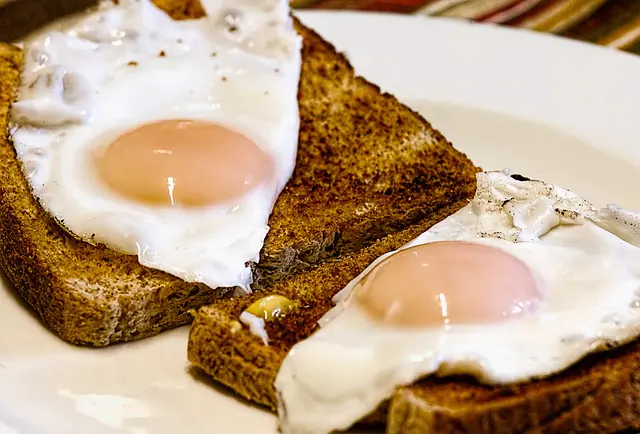Mastering the art of healthy eating is simpler than it seems. By adopting these straightforward practices, you can make nutritious eating a natural part of your lifestyle.
Diversify Your Plate
Long-term success with diets often eludes people who exclude entire food groups or place severe restrictions on their diet.
Generally, there's no food that's completely off-limits; it's all about moderation and occasional indulgence. For instance, consider swapping the typical ratio of toppings on your dessert—instead of a bowl of ice cream with a sprinkle of blueberries, try a bowl of blueberries with a dollop of ice cream.
Mind Your Portions
Apart from the significant impact of sugar, managing weight is essentially about balancing energy intake and expenditure.
This balance doesn't apply to sugar and processed carbs, which can lead to insulin spikes, metabolic issues, and weight gain, even when overall calorie intake is controlled. Consuming 1300 calories of fruits and vegetables versus 1300 calories of desserts like pie and ice cream will yield vastly different results; not all calories are equal in terms of energy balance.
To shed pounds, you need to burn more calories than you take in. Portion control is a winning strategy in this endeavor.
A simple trick is to downsize your dinnerware. Opt for a 9-inch plate instead of a 12-inch one to trick your brain into thinking you're eating more while actually consuming fewer calories. Allow yourself 20 minutes before considering seconds, as that's how long it takes for your body to signal fullness.
Additionally, a crucial reminder: steer clear of "supersized" options when dining out. The extra calories are not worth the potential health consequences.
Embrace Fruits and Vegetables
No one has ever gained weight from eating whole, unprocessed apples or broccoli. These foods are low in calories and high in volume, helping you feel full with fewer calories. Some, like celery, even require more energy to digest than they provide.
When it comes to fruit, choose whole pieces over juice to benefit from the fiber that juicing removes. Fiber slows sugar absorption and promotes satiety, so instead of reaching for juice or candy, opt for an apple.
Go for 100% Whole Grains
Not all grains are created equal, even those labeled "whole wheat."
Tip: Look for products that list "100% whole grain" or "100% whole wheat" on the label, or that display the "Whole Grain Stamp" on their packaging.
Cut Back on Added Sugar
Sugar is a simple carbohydrate that's often added to foods by manufacturers.
Tip: Check the nutrition label for added sugars and the fiber content. If there's more sugar than fiber, it's likely not a healthy option. Be aware that added sugars can be listed under various names, often ending in "ose," signaling a hidden sugar.
Choose Healthy Fats
There are three types of fats: saturated, unsaturated, and trans.
Tip: Avoid trans-fats, as they contribute to disease over time. Replace saturated fats with healthier unsaturated fats, such as olive oil or avocado, and aim to include omega-3 fats from sources like flaxseed, fish, or supplements.
Limit Red Meat
Reducing red meat intake is crucial, as many cuts are high in saturated fats that can harm your heart and cardiovascular health. Start by omitting red meat one day a week and gradually increase the number of meat-free days as you adjust.
Though we've covered a lot, these seven habits are easy to incorporate. Which will you try this week? By reducing daily calorie intake and ensuring they come from healthy sources, you can lose weight and improve your health.
Add some exercise to burn even more calories, and soon you might find yourself fitting into those favorite jeans again. And if they're out of style, that's all the more reason to celebrate with a new shopping spree!
Recent
See All2025-02-19
Embrace a Plant-Based Diet for Enhanced Health and Longevity
2025-02-19
Unveiling the Illusion of Healthy Foods
2025-02-19
Maximize Your Fitness Routine in Minimal Time
2025-02-19
Set Aside the Scale for a While!
2025-02-19
Is Snacking Late at Night Truly Detrimental to Your Health?
2025-02-19
Harnessing Your Food Cravings: A Blueprint for Overcoming Those Persistent Urges
2025-02-19
Is Breakfast Really the Key to a Healthy Day?
2025-02-19
Harness the Power of Physical Therapy to Alleviate Pain
2025-02-19
Transform Your Fitness Routine with High Intensity Interval Training!
2025-02-19
Embrace a Diet-Free Lifestyle for Everlasting Health!
Newsletter
Get life tips delivered directly to your inbox!











